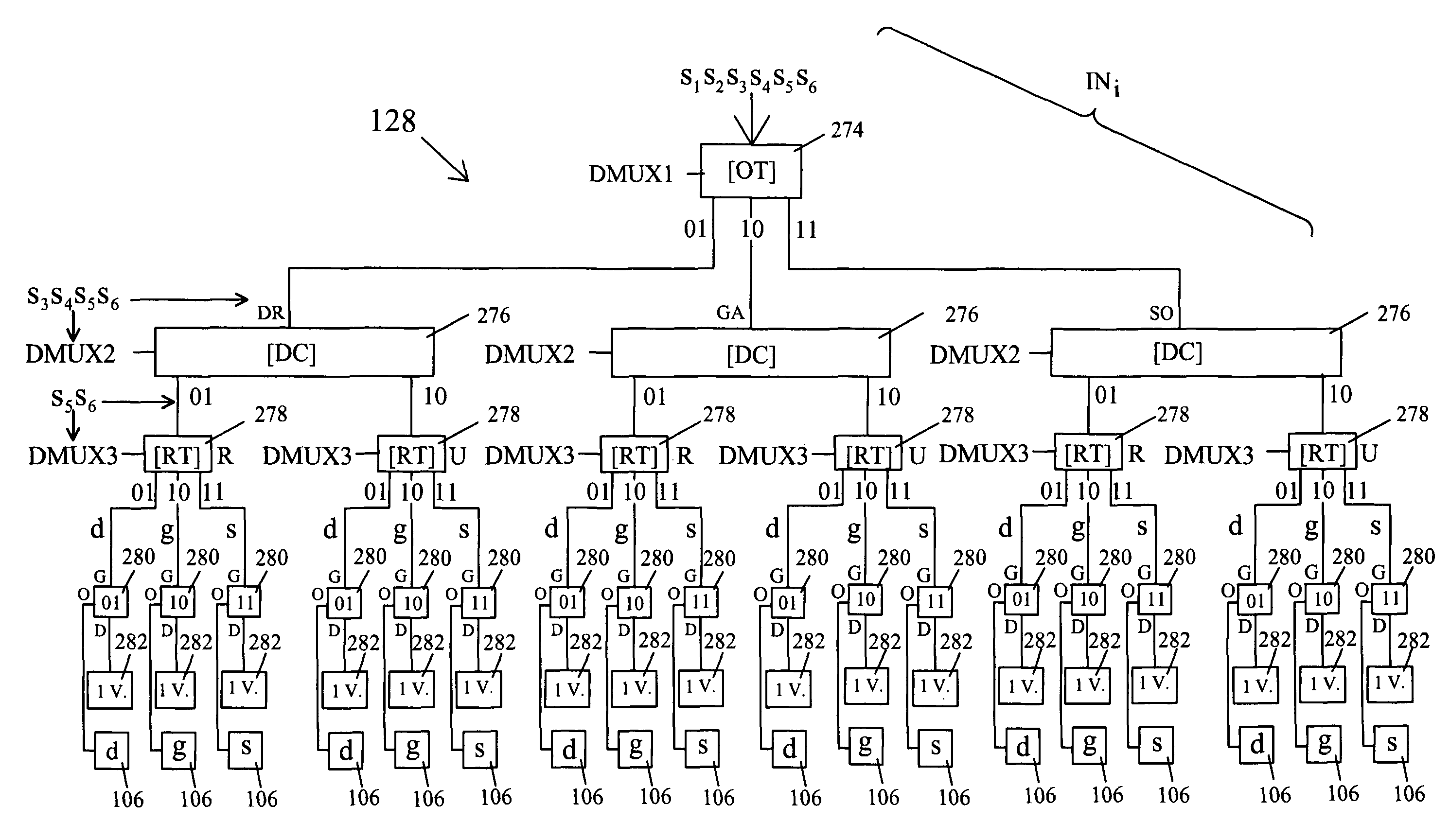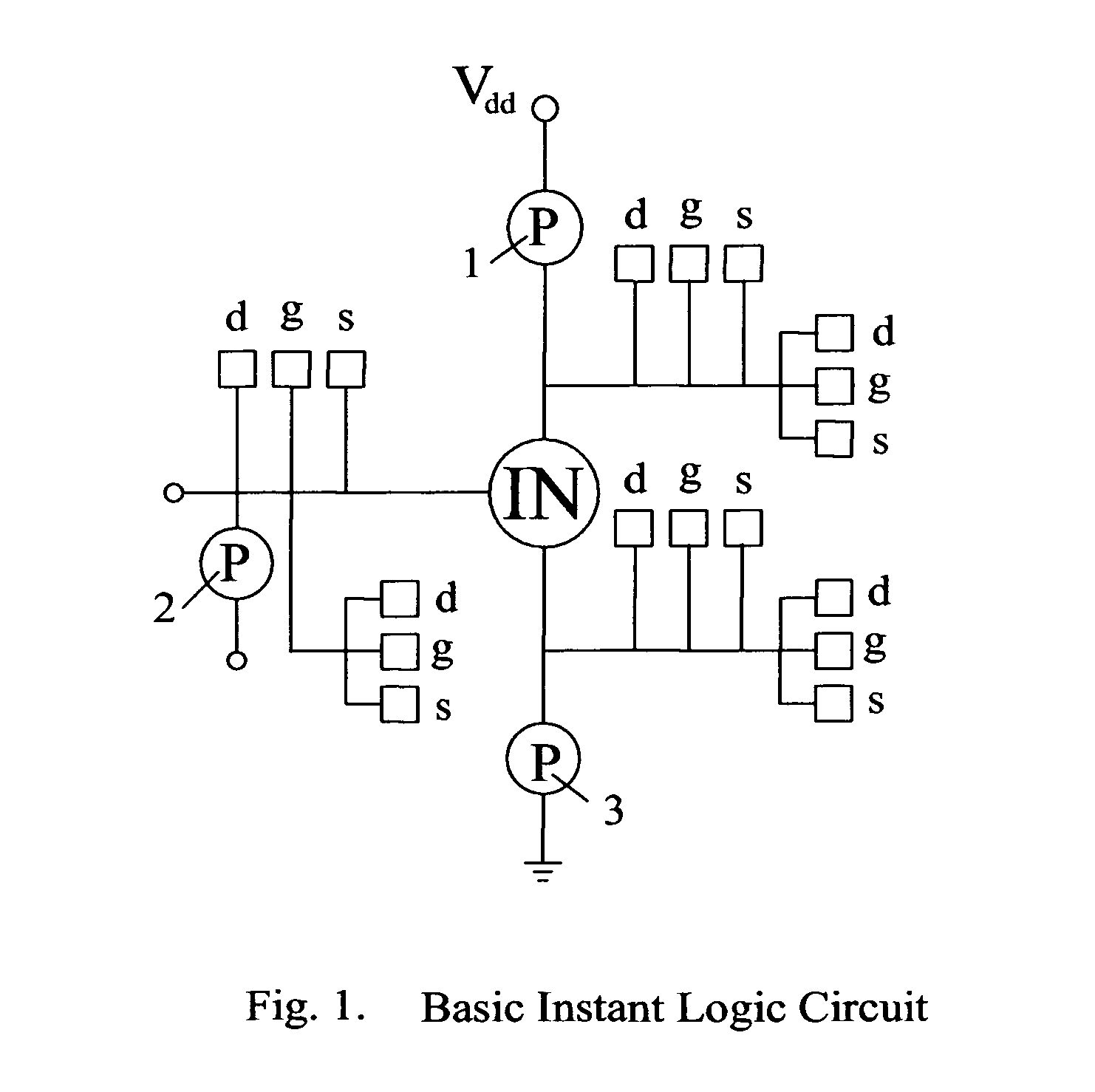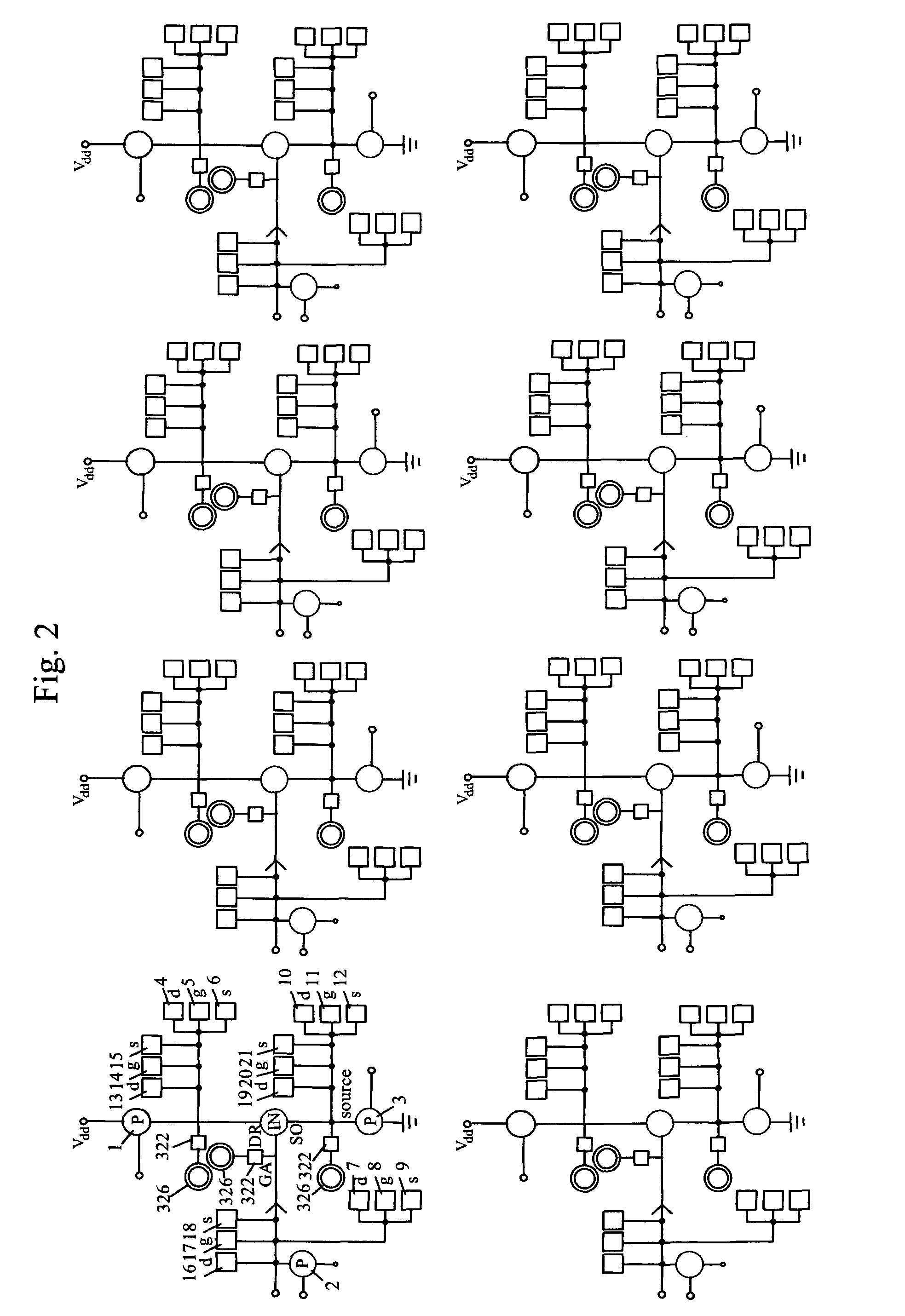Adoption of that procedure was no doubt because that was the only one available, there being no way in which any such processing apparatus, whether made of wood,
metal, or whatever, could be “transferred” to the data, and indeed the very notion would at that time have seemed quite nonsensical.
The problem seems to be that the field of
electronics had not then developed to a stage that could be applied immediately to such functions.
Not mentioned is the fact that, as elsewhere in
electronics, there will often arise circumstances in which a
gain in one aspect of an operation may cause a loss in another; here the conflict lies between “efficiency” and speed.
In addition, the continued use of μPs as PEs in
parallel processing apparatus can only suggest that the delaying effect of the μP as such was either not fully appreciated or no solution therefor could be found.
Operations that had been written for a sequential computer were modified so as to be more amenable to parallel treatment, but such a modification was not always easy to accomplish.
In summary of the foregoing, it is that
bottleneck between the CPU and memory, not sequential operation, that causes the
delay and limits the speed at which presently existing computers can operate.
It was natural to consider the
gain that might be realized, upon observing one sequential process taking place, if one added other like processes along with that first one, thereby to multiply the
throughput by some factor, but the result of needing to get those several processes to function cooperatively was perhaps not fully appreciated
Parallel processing certainly serves to concentrate more processing in one place, but not only does not avoid that
bottleneck but actually multiplies it, with the result that the net computing power is actually decreased.
What is now done by IL could not have been done during the early development of computers since, just as in Babbage's case, the technology needed to carry out what was sought was simply not available, and so far as is known to Applicant, IL could not be carried out even now without the pass
transistor or an equivalent binary switch.
That is, Hockney and Jesshope note that “all data read by the input equipment or written to the output equipment had to pass through a register in the arithmetic unit, thus preventing useful arithmetic from being performed at the same time as input or output.” R. W. Hockney and C. R. Jesshope, supra, pp.
However, that process did nothing with respect to the data required for those arithmetical and
logical operations themselves, and it is those operations that fall prey to the von Neumann bottleneck (vNb) that IL addresses.
It was an era of Sturm und Drung, the years preceding the uniformity introduced by the canonical von Neumann architecture.” Even that much activity, however, did not produce anything substantially different from the von Neumann architecture, or at least anything that survived.
The principal
limiting factor of this connectionist model, and of the Carnegie-Mellon Cm* computer, is that method of handling the data.
. . the extremely high
throughput” being sought “cannot be met by using the von Neumann paradigm nor by ASIC design.
In such cases even parallel computer systems or
dataflow machines do not meet these goals because of massive parallelization overhead (in addition to von Neumann overhead) and other problems.” Hartenstein et al., supra, pp.
Of course, those are the same issues that motivated the development of Instant Logic™.
If a larger device did not function properly, it would then be known that the failure would have arisen from a fabrication problem and not from there being anything wrong with the design or the concepts underlying the IL processes.
The operation of a μP-based computer is also limited to those operations that can be carried out by whatever
instruction set had been installed at the time of manufacture, whereas any ILA can carry out any kind of process that falls within the scope of
Boolean algebra, with no additional components or anything other than the basic ILA design being needed.
In writing that code, the user of the ILA will encounter a problem that would be unheard of in a computer, namely, that of “mapping” the course of an
algorithm execution onto the ILA geography without “running into” any locations therein that in any particular cycle were already in use by some other
algorithm.
Central control has long been an issue in the computer field, based on difficulties that were perceived to arise from having the control and the processing in different locations, meaning that the control had been “centralized.” Before actually addressing that issue, however, precisely how the term will be used should be made clear.
The user is of course not typically included in the discussion of the computer as such, but even so, there will typically be a single location at which all of those key depressions and mouse clicks will be utilized, so the point remains—given the need for a specific site at which the user can bring about all further actions, that kind of “central control” cannot be avoided.
However, that is not the kind of control that is at issue.
In other words, this “central control” issue is one on which a different mind set is required, in that such issue will have lost much of its meaning when applied to Instant Logic™.
The
delay problem will obviously disappear if the data and processing circuitry are located at the same place, as occurs in IL.
It would seem that the analysis of how computers could be made to run faster was simply not carried deep enough.
Those could not be fixed connections, of course, since the whole array would have been rendered unusable for anything (and conceivably could get burnt out), which would certainly not make for a
general purpose computer.
Moreover, if one painstakingly searched the entirety of the “prior art,” including all patents and technical articles, nowhere would there be found any suggestion that the procedures of IL and the architecture of the ILA might be adopted.
Also, PP systems are not scalable, and as noted in Roland N. Ibbett, supra, and shown more thoroughly below, cannot be made to be scalable as long as there are any processing needs beyond those already present in the von Neumann Single Instruction, Single Data (SISD) device.
As will be shown in more detail below, each addition of more μPs would require yet more overhead per μP, and hence could not increase the computing power in any linear fashion.
However, the test for
scalability based on having accumulated together some large number N of small but fully functional processors as the PEs to make a large parallel processor (PP) that is then to be measured against the cumulative
throughput of those N smaller PEs taken separately, to determine whether the device is scalable, cannot be used.
By itself, however, the circuit of FIG. 1 can at most form an
inverter (or a BYPASS gate, as will be described later), and is thus not a fully functional device.
To express this matter in another way, the issue of
scalability arises in the context of whether or not there is any limit to the “speed level” and data handling capacity that could be attained by adding more components to an existing
system (which of course is why the whole subject arises in the first place), so how those PEs might be defined is actually immaterial as to that question.
Also, Muller et al., note that several ways of overcoming
delay have been tried, including the “cluster” designs that Muller et al. indicate have the
disadvantage of limits in expandability, “MPP systems required additional
software to present a sufficiently simple application model” .
(Since there is a practical limit to how large a computer could be built, it the added burden of having more computers was really minimal, it might well turn out that the issue of scalability could actually be of little significance.
That is, there could be a “
supercomputer” built of a size such that there was really no practical way to make that apparatus any larger, but with this occurring at a stage in expanding the size of the apparatus that was well before the lack of scalability could be seen to have any appreciable effect.
That model does not fit the CHAMP
system, since it has no such central
control system, but has instead incorporated that ability to function cooperatively into those sub-units themselves.
However, that does not resolve the underlying question of whether or not the CHAMP
system can be expanded without limit, as is the case with the ILA.
And as also noted above, even when treating the entire CHAMP module as the base unit of a scalability determination there will still be a loss of scalability because of the additional
software required, insofar as more time or program instructions are required per module as the system gets larger, since that would produce an overhead / IP ratio that increases with size.
The program may not need to have been altered in adding more PCs, as was the object of the CHAMP design, but the message traffic will have increased, and that additional message traffic will preclude the CHAMP system from achieving scalability.
A “setup” time is also involved in pipelining, and the “deeper” the pipelining goes, i.e., how extensive the operations are that would be run in parallel, the more costly and time-consuming will be the pipelining operation.
It was noted earlier, however, that the addition of computers might well reach a practical limit (e.g., the size of the room) before any effect of Amdahl's Law would be noticeable.
The
general purpose computer with programs for carrying out a wide variety of tasks thus came into being, but at the cost of introducing the von Neumann bottleneck (vNb) that made the operations much less efficient than those operations had been when carried out by fixed circuits.
Since that early circuitry was fixed, however, none of such devices could constitute a “
general purpose” type—each did one job, and only that job.
The apparatus must be stopped in its course in order to make that change, however, and once a particular task has been undertaken, the nature of that task, if the overall IP task is to be fully carried out, cannot be changed until that first task has been completed.
For such applications, ASICs were too expensive, and programmable logic devices were not only too expensive but also too slow. μP-based systems were economically feasible, and the speed sought could be obtained by shrinking the size of the transistors, but the performance price of so doing was an increasing leakage current—something clearly to be avoided in an untethered device.
However, as has just been seen, what FPGAs (and “configurable” systems in general) can actually do is quite different from what is done by the ILA.
That FPGA procedure is of course quite useful, and gives to the FPGA a flexibility beyond that of the μP-based computer in which the gate interconnections are all fixed, but the gates being so re-connected in the FPGA will still remain in the same physical locations, so the FPGA lacks the ability to place the needed circuitry at those locations where it is known that the data will actually appear, and hence cannot eliminate the von Neumann bottleneck in the manner of IL and the ILA.
However, as an example, one algorithm might require that there be some small collection of contiguous OR gates at one point in the process, and if such a collection had been hardwired into the FPGA somewhere that part of that one algorithm could be accommodated, but another algorithm might never require such a collection, could require an ensemble of gates that had not even been installed, or there could be no gates surrounding those OR gates that would fulfill the requirements of the next step in the algorithm.
And to base the operation on entire gates all at once would again be wasteful of space, since some gates would never be used.
Moreover, once that collection of OR gates had been used just once in the one algorithm, those gates might not be used again and hence would thereafter be
wasting space in their entirety.
But “in practice, a grid is not really a good way to connect the routers because routers can be separated by as many as 2 n−2 intermediaries.” Hillis, supra, p.
 Login to View More
Login to View More  Login to View More
Login to View More 


